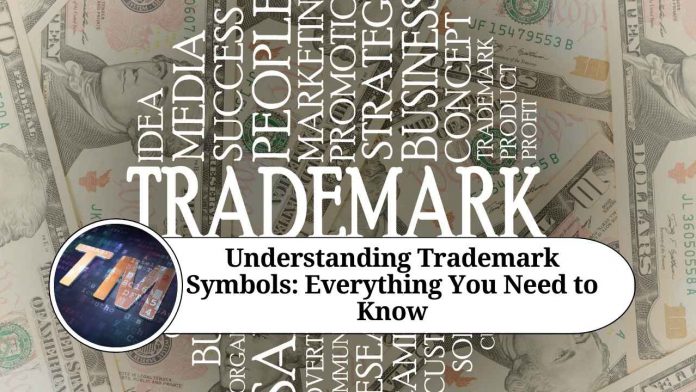Trademark Symbols: Understanding the Symbols Used to Protect Your Brand
In today’s competitive marketplace, branding is more important than ever. Protecting your brand is essential to maintaining your company’s reputation and identity. One way to do this is by using trademark symbols. These symbols help identify your brand as a unique and protected entity. In this blog, we will discuss the different trademark symbols and their uses.
What is a trademark symbol?
A trademark symbol is a symbol used to identify and protect a brand. It can be a symbol, a word, a phrase, or a combination of these elements. Trademark symbols are used to distinguish a company’s products or services from those of its competitors.
What are the different trademark symbols?
There are three main trademark symbols: ™, ®, and ℠.
- ™ – The Trademark Symbol
The ™ symbol is used to indicate that a word, phrase, symbol, or design is being used as a trademark. This means that the owner of the mark is claiming rights to use it to identify its products or services. The ™ symbol is not a legal requirement, but it is often used to put others on notice of the claim.
- ® – The Registered Trademark Symbol
The ® symbol is used to indicate that a trademark has been registered with the appropriate government agency. In the United States, this agency is the United States Patent and Trademark Office (USPTO). This symbol can only be used after a trademark has been registered, and it is illegal to use it otherwise.
- ℠ – The Service Mark Symbol
The ℠ symbol is used to indicate that a word, phrase, symbol, or design is being used as a service mark. This means that the owner of the mark is claiming rights to use it to identify its services. The ℠ symbol is similar to the ™ symbol, but it is used specifically for service marks.
When should you use trademark symbols?
Trademark symbols should be used whenever a company uses a word, phrase, symbol, or design to identify its products or services. The use of trademark symbols can help prevent others from using similar marks and can provide evidence of ownership in the event of a legal dispute.
It is important to note that the use of trademark symbols does not automatically grant legal protection. To receive legal protection, a trademark must be registered with the appropriate government agency.
Additional Information on Trademark Symbols:
- When to use the ™ symbol:
The ™ symbol can be used as soon as a company begins using a word, phrase, symbol, or design to identify its products or services. It is important to note that the use of the ™ symbol does not provide the same level of protection as a registered trademark. However, it does put others on notice of the claim and can be used as evidence of ownership in a legal dispute.
- When to use the ® symbol:
The ® symbol can only be used once a trademark has been registered with the appropriate government agency. In the United States, this agency is the USPTO. Using the ® symbol without a registration is illegal and can result in fines or other legal consequences.
- When to use the ℠ symbol:
The ℠ symbol is used in the same way as the ™ symbol, but for service marks rather than trademarks. Service marks are used to identify services rather than products. Examples of service marks include the McDonald’s “I’m Lovin’ It” jingle and the Nike “Just Do It” slogan.
- International trademark symbols:
Trademark symbols may vary depending on the country. For example, in some countries, the ® symbol is not used and instead, a different symbol is used to indicate a registered trademark. It is important to research the specific trademark symbols used in the countries where you plan to use your mark.
- Proper use of trademark symbols:
It is important to use trademark symbols properly to ensure they are effective in protecting your brand. Trademark symbols should be used consistently and prominently with the mark they identify. For example, the ™ symbol should be used every time the mark is used, and it should be placed next to the mark, preferably in superscript. Similarly, the ® symbol should be used every time the mark is used after it has been registered, and it should be placed next to the mark in superscript.
Conclusion:
Trademark symbols are important tools for protecting your brand and should be used appropriately. The ™ symbol can be used as soon as a mark is being used to identify products or services, while the ® symbol can only be used after a mark has been registered. The ℠ symbol is used for service marks. Proper use of trademark symbols is essential to their effectiveness in protecting your brand. It is important to research the trademark symbols used in the countries where you plan to use your mark, as they may vary.
Read more useful content:
Frequently Asked Questions (FAQs)
- What is a trademark symbol, and why is it important?
A trademark symbol is a symbol used to identify and protect a brand. It is important because it helps distinguish a company’s products or services from those of its competitors and helps prevent others from using similar marks.
- What are the different trademark symbols, and when should they be used?
The three main trademark symbols are ™, ®, and ℠. The ™ symbol is used to indicate that a word, phrase, symbol, or design is being used as a trademark. The ® symbol is used to indicate that a trademark has been registered with the appropriate government agency, and the ℠ symbol is used to indicate that a word, phrase, symbol, or design is being used as a service mark.
- How do I know if I should use a trademark symbol?
A trademark symbol should be used whenever a company uses a word, phrase, symbol, or design to identify its products or services. The use of trademark symbols can help prevent others from using similar marks and can provide evidence of ownership in the event of a legal dispute.
- What is the difference between a trademark and a service mark?
A trademark is used to identify a company’s products, while a service mark is used to identify a company’s services.
- How do I register a trademark?
To register a trademark, you need to file an application with the appropriate government agency. In the United States, this agency is the United States Patent and Trademark Office (USPTO).
- How long does it take to register a trademark?
The time it takes to register a trademark varies depending on the country and the complexity of the application. In the United States, it typically takes six to nine months for a trademark to be registered.
- What are the benefits of registering a trademark?
Registering a trademark provides legal protection for your brand and allows you to prevent others from using similar marks. It also provides evidence of ownership in the event of a legal dispute.
- Can I use a trademark symbol if my trademark is not registered?
Yes, you can use the ™ symbol to indicate that a word, phrase, symbol, or design is being used as a trademark, even if it is not registered.
- Can I use a registered trademark symbol if my trademark is not registered?
No, it is illegal to use the ® symbol unless your trademark has been registered with the appropriate government agency.
- What should I do if someone is infringing on my trademark?
If someone is infringing on your trademark, you should consult with a lawyer who specializes in intellectual property law. They can advise you on the best course of action, which may include sending a cease and desist letter or filing a lawsuit.




















